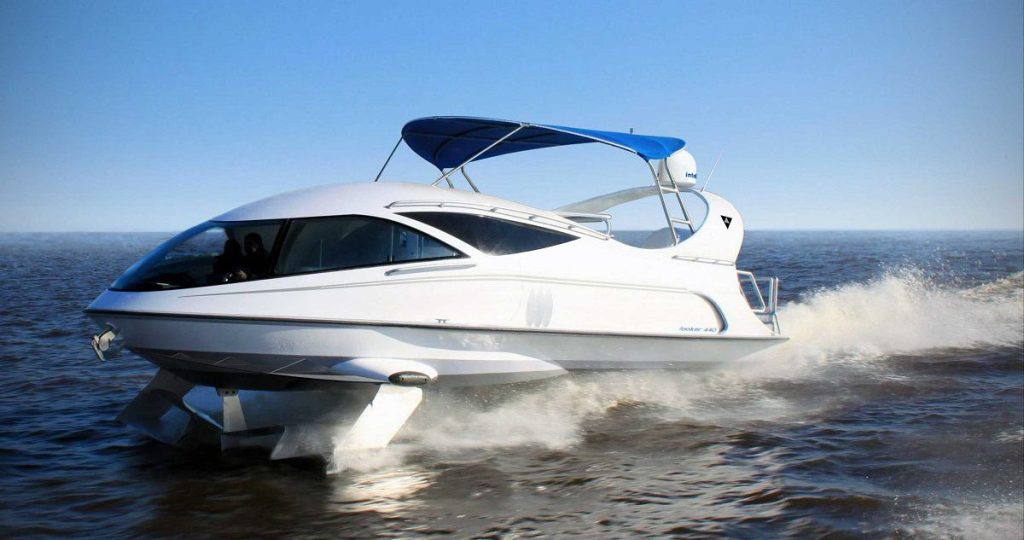An ideal way of increasing the speed of any water craft is to minimize the contact of its hull with the sea water. Hydrofoil sailboat is one such type of water craft that does the same job but in a different way. Hydrofoil boats consist of two wings like structures, also known as foils, mounted on special legs beneath the hull of the water craft. Each of these foils has its own propulsion system, consisting of an engine and a propeller. The function of the foil is similar to that of an airplane’s wing. As the boat moves through water and increases its speed, the foils create a lift that pushes the boat out of water, thereby drastically increasing the speed of the water craft.

Brief History
Hydrofoil sailboats were first invented around hundred years ago in 1906 by an Italian engineer. However, it was only in the first half of the twentieth century that its true potential was found. The first fully functional hydrofoil that could carry passengers was built in 1936. Hydrofoils were also used extensively during the time of World War II.
Principle of Working
In a boat having conventional hull, a large amount of energy is lost when the hull is in contact with water. In hydrofoils, the water moves faster over the top surface of their wings, creating a drop in pressure and an upward force that pulls the boat out of the water. As the speed of the boat increases, the upward force lifts the boat further, decreasing the drag and thereby giving a boost to the boat’s speed. The boat rises out of the water till the point where it can’t be lifted further because of the weight of the craft pushing the boat downwards. Thus, the boat stays in mid air, in an equilibrium position, allowing very little contact with water, reducing drag and increasing stability and speed of the craft.
The boat’s least contact with the water is a huge benefit as it prevents the craft from getting affected by the rough waves. However, there are two ways in which a hydrofoil moves through the water – platforming and contouring. When the waves are smaller, i.e. smaller than the height of the boat, the hydrofoil performs platforming, a phenomena wherein it moves through water without much lift, preventing the waves from touching its waterplane. Whereas if the waves are large, the hydrofoil performs another function known as contouring, which allows the hydrofoil to move along the shape of the wave and thus prevents itself from getting affected by the same.

Types of Foils
There are mainly two types of foils :
· V shaped foil
· T shaped foil
The earliest hydrofoils used the V shaped foil, which pierced the water surface as it moved through the water. The T shaped foil remains fully submerged in water, providing more stability as it is less subjected to the effects of waves. However, this type of foils requires great control ability to continuously adjust them according to the changing waves.




Comments are closed